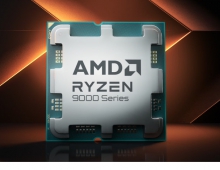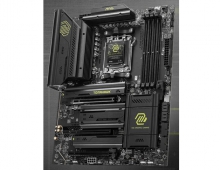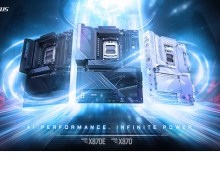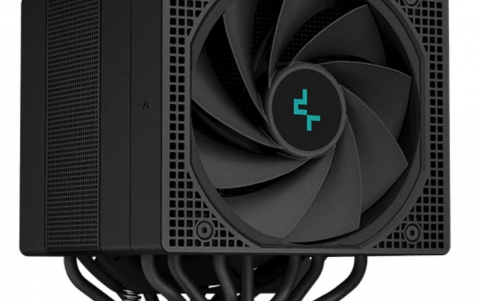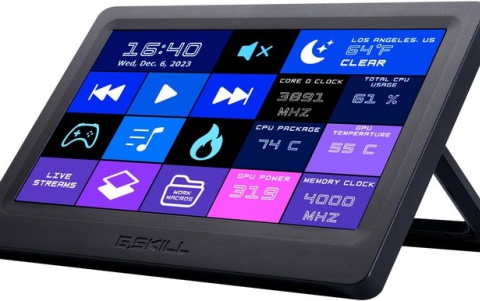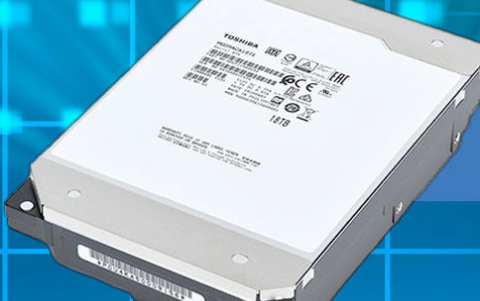
CeBIT: AMD Presents R600 DirectX10 GPU
AMD gave details about its upcoming R600 Graphics Processor Unit (GPU) at CeBIT, in a very interesting presentation for hardware enthusiasts.
Rick Bergman, Senior Vice President and General Manager of Graphics Product Group AMD, talked about AMD's first DirectX 10 GPU, which features an HDMI output, as well as a hardware decoder engine for MPEG-4 AVC/VC-1.
The R600 could be considered as the second generation of the ATI Xenos GPU, which powers Microsoft's Xbox 360 game console. It features 48 Unified Shaders and fully supports DirectX 10 and Shader Model 4.0.
In addition, the R600 is the first GPU that integrates the Universal Video Decoding (UVD) engine for hardware video decoding, plus a 3D engine for rendering. According to AMD, this configuration offers a significantly higher performance, since the workload of CPU during play-back of HD video is transferred to the GPU and specifically the UVD engine itself. In addition the shaders are off-loaded since video decoding is not dependent on the 3D engine.
Compared to previous configurations of GPUs that did not take advantage of the UVD engine, the R600 is able to decode 1080p Blu-Ray and HD DVD video (MPEG-4 AVC) at 40Mbps, which is significantly higher than the previously 25Mbps, mainly limited by the CPU speed. Dual-stream decoding is also supported too allowing the Universal Video Decoder to decode two video streams at the same time for picture-in-picture features found in next generation movie titles.
Furthermore, Bergman gave details about the HDMI digital output interface that is supported by the R600. AMD has chosen to integrate an HD-Audio controller into the GPU, and not into the south bridge chipset as rival Nvidia has announced so far. The essential HDCP encryption keys for reproduction of HD commercial video titles are stored in to the GPU, allowing both HD audio and video signal to be driven to the HDMI output, after the essential synchronization. Note that video and audio signals will be merged only when the HDMI interface is in use.
Bergman also said that AMD is preparing an 65nm version of the R600, that will feature a lower power consumption and will be used in the future DirectX 10-enables notebooks, possibly available later this year.
However, power consumption of the R600 series of GPUs is high. The consumption of the high-end model is expected to be higher than 250W, while for the mainstream version (RV610), it will be around 100W. This could be an issue for OEM PC manufacturers. A low-end model (RV630) for notebooks will consume approximately 25-35W.
Bergman did not gave any details about the availability of the R600 GPUs or AMD's OEM partners that will offer it. According to industry sources, the first products should be expected in April.
The R600 could be considered as the second generation of the ATI Xenos GPU, which powers Microsoft's Xbox 360 game console. It features 48 Unified Shaders and fully supports DirectX 10 and Shader Model 4.0.
In addition, the R600 is the first GPU that integrates the Universal Video Decoding (UVD) engine for hardware video decoding, plus a 3D engine for rendering. According to AMD, this configuration offers a significantly higher performance, since the workload of CPU during play-back of HD video is transferred to the GPU and specifically the UVD engine itself. In addition the shaders are off-loaded since video decoding is not dependent on the 3D engine.
Compared to previous configurations of GPUs that did not take advantage of the UVD engine, the R600 is able to decode 1080p Blu-Ray and HD DVD video (MPEG-4 AVC) at 40Mbps, which is significantly higher than the previously 25Mbps, mainly limited by the CPU speed. Dual-stream decoding is also supported too allowing the Universal Video Decoder to decode two video streams at the same time for picture-in-picture features found in next generation movie titles.
Furthermore, Bergman gave details about the HDMI digital output interface that is supported by the R600. AMD has chosen to integrate an HD-Audio controller into the GPU, and not into the south bridge chipset as rival Nvidia has announced so far. The essential HDCP encryption keys for reproduction of HD commercial video titles are stored in to the GPU, allowing both HD audio and video signal to be driven to the HDMI output, after the essential synchronization. Note that video and audio signals will be merged only when the HDMI interface is in use.
Bergman also said that AMD is preparing an 65nm version of the R600, that will feature a lower power consumption and will be used in the future DirectX 10-enables notebooks, possibly available later this year.
However, power consumption of the R600 series of GPUs is high. The consumption of the high-end model is expected to be higher than 250W, while for the mainstream version (RV610), it will be around 100W. This could be an issue for OEM PC manufacturers. A low-end model (RV630) for notebooks will consume approximately 25-35W.
Bergman did not gave any details about the availability of the R600 GPUs or AMD's OEM partners that will offer it. According to industry sources, the first products should be expected in April.

